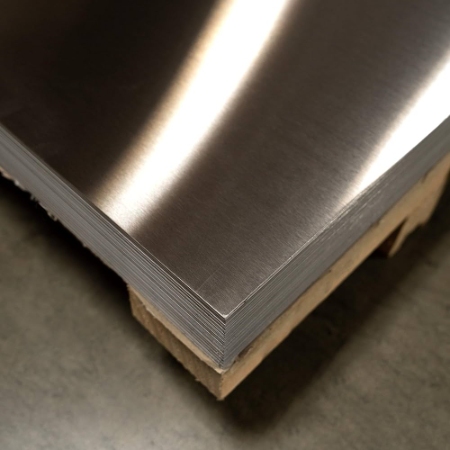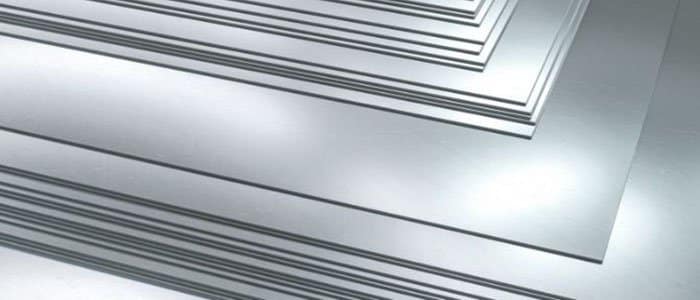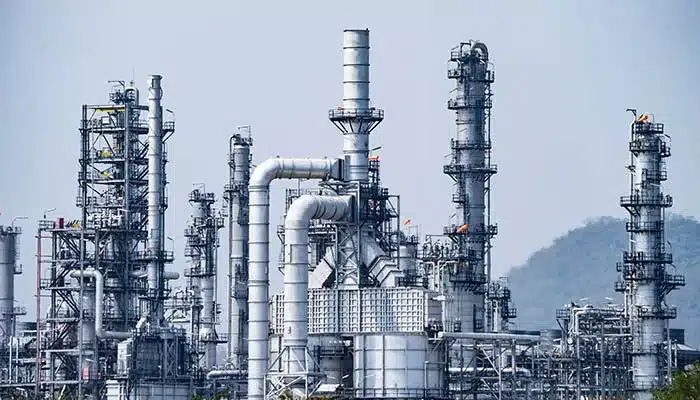When you think of stainless steel, you might picture a shiny, non-magnetic kitchen sink or a sleek appliance. But the world of stainless steel is far more diverse than that single image. Within the 400 series, one grade stands out for its unique combination of affordability, practicality, and performance: 430 stainless steel.Often called a “ferritic” stainless steel, 430 is one of the most widely used grades in the world. It’s the workhorse behind countless products we interact with daily.
This guide will walk you through everything you need to know about 430 stainless steel, from its chemical makeup to its real-world applications, helping you decide if it’s the right choice for your next project.
What Exactly is 430 Stainless Steel?
At its core, stainless steel is an iron alloy with a minimum of 10.5% chromium. This chromium content is what gives the steel its “stainless” properties by forming a passive, invisible layer of chromium oxide on the surface. This layer protects the steel from rust and corrosion.
430 stainless steel belongs to the ferritic family. The key characteristic of ferritic steels is their body-centered cubic (BCC) crystal structure, which directly influences their most notable properties: magnetism and a distinct set of mechanical characteristics.Unlike the more famous 304 stainless steel (austenitic steel), 430 contains virtually no nickel. This is the primary reason for its lower cost and magnetic properties.

Chemical Composition and Key Properties
Chemical Composition of Grade 430
| Element | Percentage (%) | Role in the Alloy |
|---|---|---|
| Chromium (Cr) | 16.00 – 18.00 | The star player. Provides corrosion and oxidation resistance. |
| Carbon © | Max 0.12 | Affects hardness and strength. Higher carbon can reduce weldability. |
| Manganese (Mn) | Max 1.00 | Helps with deoxidization during manufacturing. |
| Silicon (Si) | Max 1.00 | Improves strength and oxidation resistance. |
| Phosphorus (P) | Max 0.040 | An impurity, kept low for better quality. |
| Sulfur (S) | Max 0.030 | An impurity, kept low to improve ductility and weldability. |
| Iron (Fe) | Balance | The base metal. |
Key Properties
- Magnetic: This is the easiest way to identify 430. Its ferritic structure makes it strongly magnetic, unlike non-magnetic austenitic grades like 304. This property is essential for applications involving magnetic components or induction heating.
- Good Corrosion Resistance: With 16-18% chromium, 430 offers excellent resistance to atmospheric corrosion, fresh water, and many mild chemicals and organic compounds. It’s perfect for indoor and normal outdoor environments. However, it is not as resistant as 304 in corrosive environments, especially those containing chlorides (like salt water or de-icing salts).
- Formability and Ductility: 430 can be readily formed and drawn, making it suitable for a variety of shaping processes like bending, stamping, and spinning. While not as ductile as 304, it performs well for most standard fabrication needs.
- Heat Resistance: It exhibits good resistance to oxidation at continuous temperatures up to around 1500°F (815°C). This makes it a solid choice for applications involving moderate heat, such as furnace parts and automotive exhaust systems.
- Cost-Effective: The absence of nickel, a relatively expensive and volatile commodity, makes 430 significantly more affordable than austenitic stainless steels. This is often the deciding factor for projects with tight budgets.
Common Applications of 430 Stainless Steel
Thanks to its balanced properties, 430 stainless steel is found in a vast array of products across numerous industries.
- Appliances: This is its largest market. You’ll find it in the panels, trim, and liners of refrigerators, dishwashers, dryers, and ranges. Its formability and attractive finish make it ideal for consumer goods.
- Automotive Industry: Used extensively for trim and molding, especially on lower-cost models. It’s also a common material for automotive exhaust systems and other under-the-hood components that require heat and corrosion resistance.
- Architectural & Decorative Trim: From baseboards and wall panels to elevator doors and decorative accents, 430 provides a clean, modern look without the high cost of 304.
- Sinks and Countertops: While not as resistant as 304 to the harsh chemicals of a kitchen, 430 is frequently used for bar sinks, prep sinks, and laundry tubs where the demands are less severe.
- Food Service Equipment: It’s used for less demanding applications like food preparation tables, display racks, and certain types of cooking equipment where direct exposure to salt or highly acidic foods is minimal.
- Heat Exchangers & Furnace Parts: Its good oxidation resistance at high temperatures makes it suitable for various heat-related industrial applications.
The Advantages and Disadvantages at a Glance
Advantages of 430 Stainless Steel:
- Lower Cost: The most significant advantage, making large-scale projects economically feasible.
- Good Formability: Easily shaped into complex forms for manufacturing.
- Magnetic: Essential for specific applications and easy to sort in recycling.
- Aesthetic Finish: Takes a good polish and is available in various finishes (e.g., brushed, polished).
- Good Heat & Oxidation Resistance: Suitable for moderate-temperature applications.
Disadvantages of 430 Stainless Steel:
- Lower Corrosion Resistance: Not suitable for marine, coastal, or industrial environments with high chloride exposure.
- Reduced Weldability: Welding can lead to grain growth in the heat-affected zone, making it more brittle and less corrosion-resistant. Post-weld annealing is often required.
- Lower Toughness at Low Temperatures: Can become brittle in very cold environments, unlike 304 which maintains its toughness.
Conclusion
In summary, while 430 stainless steel may not offer the comprehensive corrosion resistance of 304 stainless steel, its excellent formability, affordability, and attractive finish make it a top choice for a wide range of applications, from shiny kitchen appliances to automotive interiors.
Ready to source high-quality 430 stainless steel for your project? Explore our extensive inventory of 430 stainless steel sheets, coils, and bars. Contact our team of experts today for a quote and personalized guidance.




